Nuki Smart Lock review: Here’s a svelte retrofit option

Expert’s Rating
Pros
- Attractive industrial design
- Rechargeable battery
- Excellent keypad/fingerprint reader add-on
- Reasonably priced
Cons
- Extremely loud during operation
- App runs very slowly
- Subscription required for Wi-Fi connectivity
Our Verdict
This petite retrofit smart lock is a discreet choice for just about any environment, though it’s incredibly loud and its app drags.
Price When Reviewed
This value will show the geolocated pricing text for product undefined
Best Pricing Today
Best Prices Today: Nuki Smart Lock

Nuki has been producing smart locks for Europeans since 2015 and is only now entering the U.S. market. With 10 years of development under its belt, Nuki has reached a level of sophistication that few competitors can boast of—and stateside homeowners get to skip the awkward growing pain years that mar so many early-generation smart home products.
The U.S. release of the Nuki Smart Lock is the fifth generation of the product, and it has evolved considerably from its initial design, which had a large battery pack fused to its underside. It now looks like a shrunken version of the now-classic August Smart Lock. Like the August, the Nuki is a retrofit lock that replaces only the interior escutcheon on your door, leaving the exterior as is. As such, it carries no ANSI or BHMA ratings, which aren’t issued for retrofit locks.
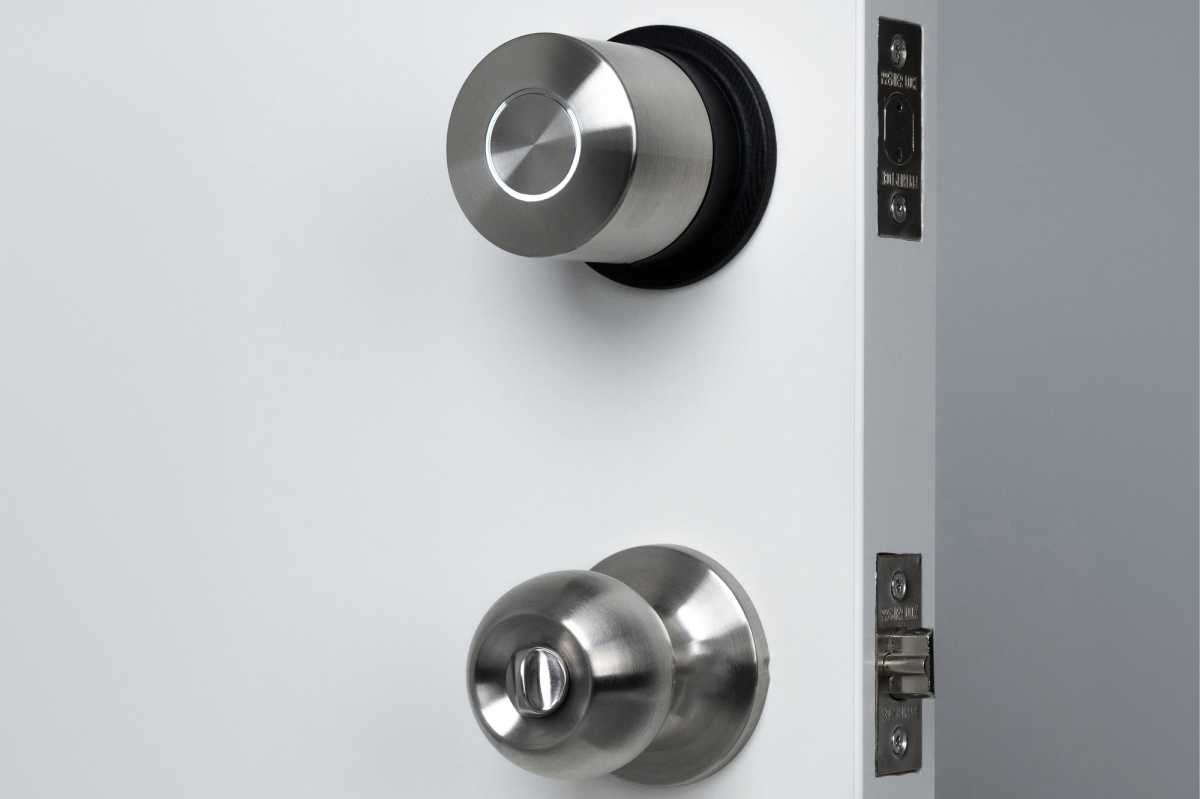
The Nuki Smart Lock replaces your existing deadbolt’s interior escutcheon; noting else about your lock changes–except that you’ll now be able to open it with an app or with the keypad accessory if you add that to your purchase.
Nuki
Also like the August, the lock is designed as a cylinder that turns in its entirety to lock and unlock the deadbolt, although measuring just 2.25 inches across, small hands will find it much easier to grip compared to the rather thick August.
Anyone shopping for a retrofit smart lock is likely to also consider the Level Bolt, which is even less visually obtrusive than the Nuki Smart Lock. I’d say the biggest advantage the Nuki offers over both August’s and Level’s offerings is its rechargeable battery. More on that in a bit.
The Nuki Smart Lock works exactly as you’d expect: Just rotate the lock one way or the other to engage or disengage the lock, as you would with a regular thumbturn.
Installation and setup
Installation proceeds much like any other smart lock, although Nuki does not include printed instructions with its packaging. Rather, you only get a QR code printed on a slip of cardboard—and because I reviewed this lock before the Nuki officially launched, scanning it took me only to the home page of Nuki’s website.
I presume future users will have a more elegant experience, but in any case, I find smart locks to be much easier to set up when you have printed installation instructions, regardless of how sophisticated the app is.
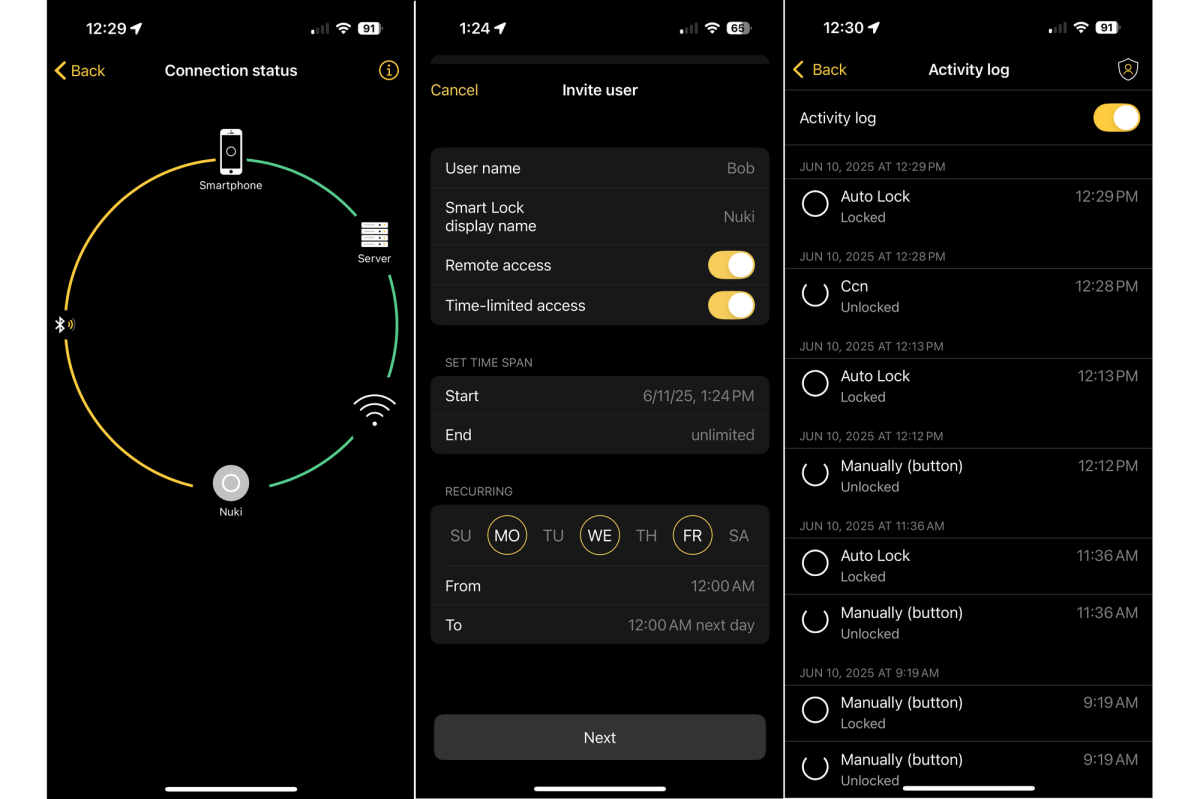
Nuki’s app is well designed and easy to use.
Christopher Null/Foundry
The Nuki app at least does a passable job at walking you through setup. That, combined with years of experience reviewing similar products, I was able to get the lock mounted on the door without much trouble. The process includes attaching an adjustable frame to the door, then using your existing lock’s bolts to connect through your current deadbolt and into the exterior escutcheon. (Unlike some other lock producers, Nuki doesn’t provide the extra bolts that I always appreciate having on hand.)
Next, you choose one of three included adapters to slip into this frame and attach to the lock’s tailpiece, depending on its shape, and then you just clip the Nuki lock directly into the frame, with no extra hardware required. There are a few extra pieces in the box whose function I wasn’t entirely sure of (again, no manual), but they appear to be designed for use with locks that have longer than standard tailpieces. The good news is that, presuming you have a standard door and lock, the entire affair goes together with just two screws.
A rechargeable battery
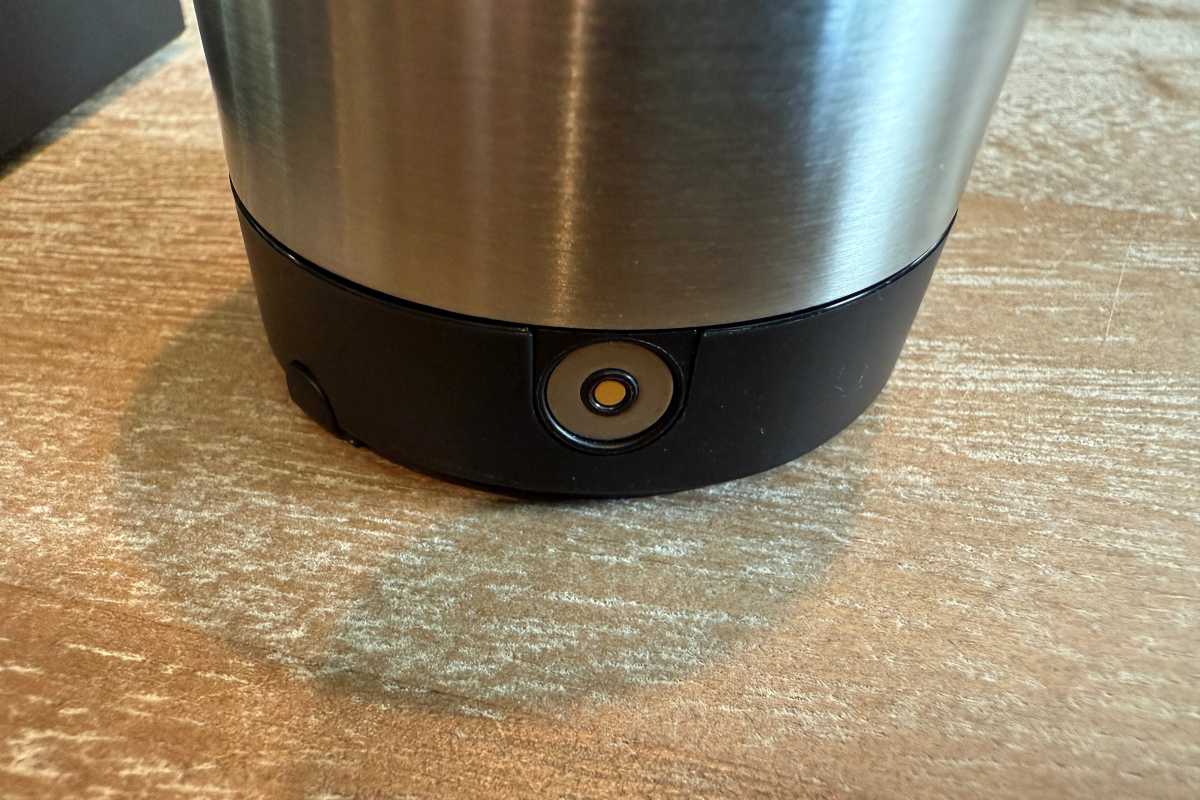
The Nuki Smart Lock has a rechargeable battery, so you won’t want to misplace the proprietary USB-C cable you’ll need for that purpose.
Christopher Null/Foundry
The Nuki lock is a sealed device with a rechargeable battery inside. Nuki says the battery should offer up to 12 months of life before it needs a refill via a magnetic cable with a USB-C plug on the other end. Just clip the cable to the charging point on the underside of the lock, connect the other end to a power source, and it’s off and running. The lock can be charged while on the door if you have power nearby (which allows the lock to continue operating), or popped off via a concealed button and charged elsewhere.
Note that the charging cable is only about 6.5 feet long, and no A/C adapter is included. While the convenience of the magnetic charger is nice, I’d have been happier with a standard USB-C port, which would allow me to use my own (longer) cable—I’d also worry less about misplacing Nuki’s.
Using the Nuki Smart Lock
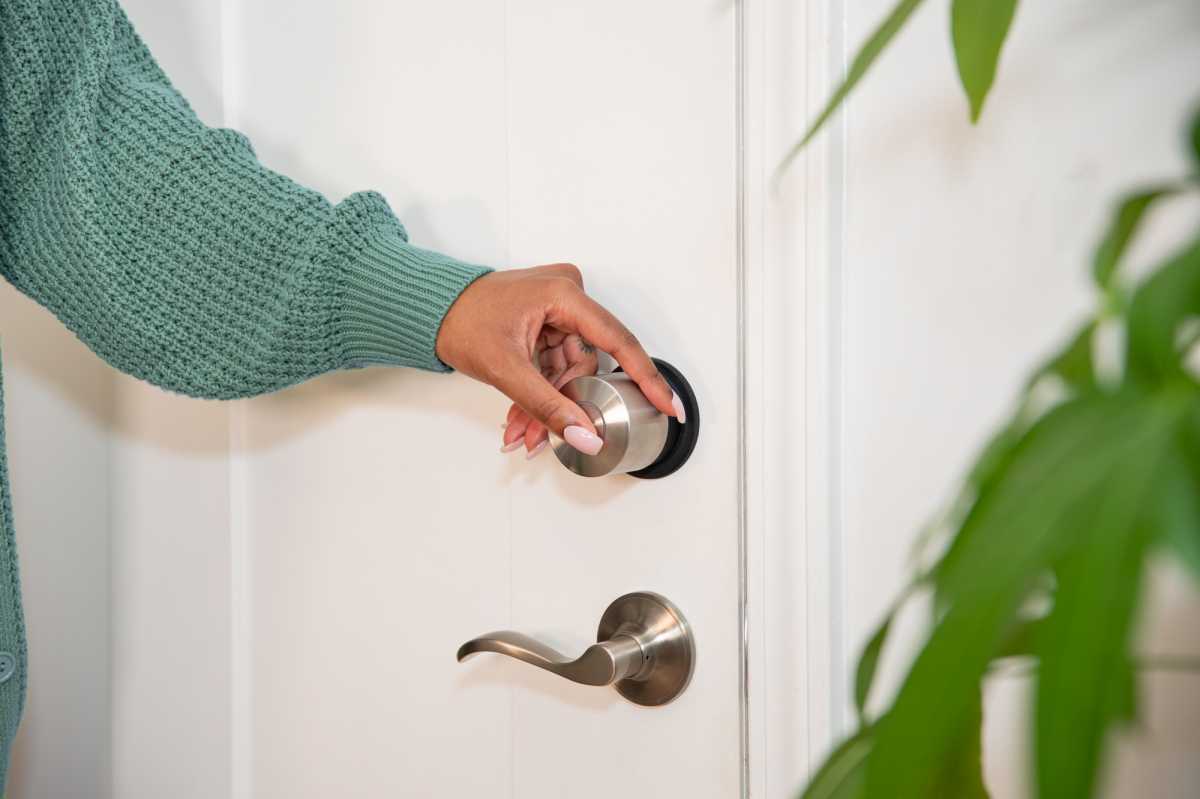
Nuki
Physically, the lock works exactly as you’d expect: Just rotate the lock one way or the other to engage or disengage the lock, as you would with a regular thumbturn. (A calibration mechanism during setup automatically orients the rotation direction.) There’s also an illuminated button on the face of the lock that can be pressed to initiate a lock or unlock sequence without needing to twist the lock itself.
Tapping the button gently causes a ring around it to illuminate: A solid circle means the lock is engaged; a U-shaped design means the lock is open. (When the door is unlocked, an LED flashes periodically as a gentle reminder; when the door is locked, all lights remain off.)
Nuki’s app is a little convoluted but reasonably easy to master, starting with a walkthrough that connects the lock to both Bluetooth and your 2.4GHz Wi-Fi network. A (lengthy) checklist system then steps you some basic settings before throwing you into the management system. By default, you can either swipe left or right on the app’s home screen to lock or unlock the door, or tap once to access the ability to lock or unlock with a second tap.
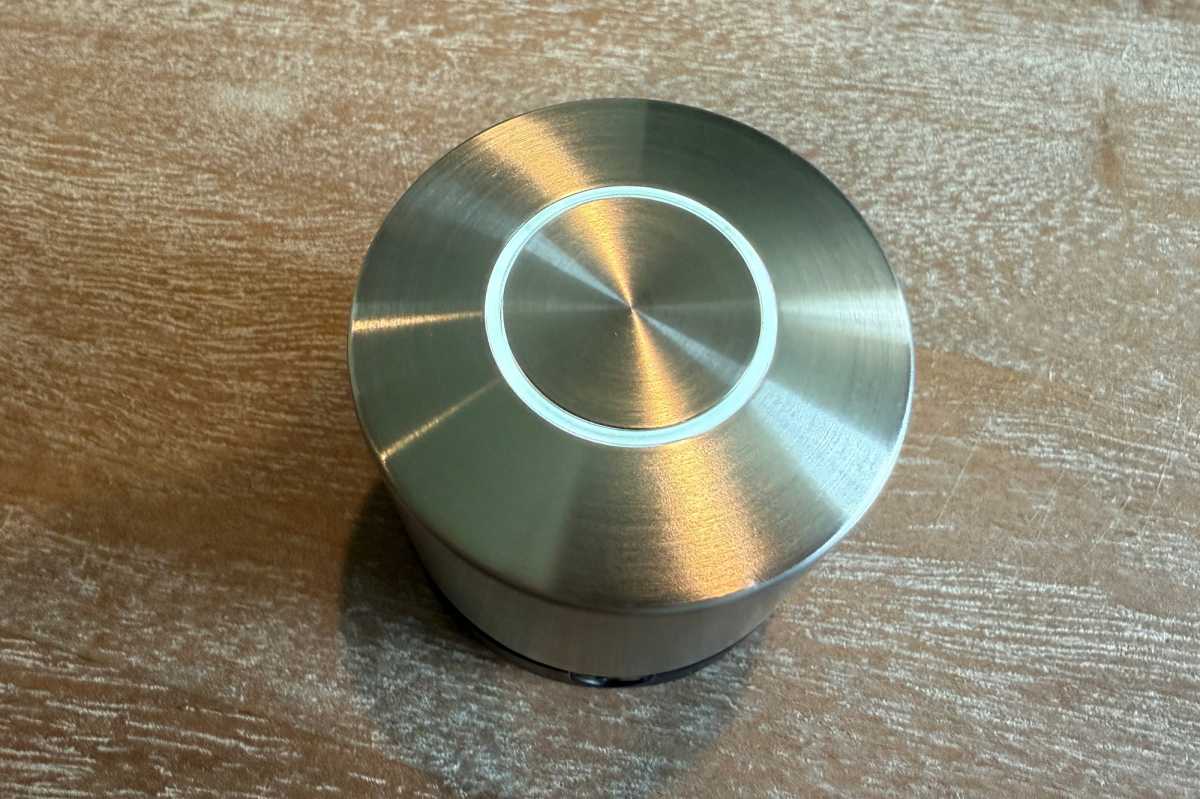
This LED light ring illuminates to inform you of the lock’s status: A solid ring indicates a locked state, while a half-circle means it’s unlocked.
Christopher Null/Foundry
The settings menu gives you deep-dive access into advanced features such as fine-grained control over how the button on the lock face works, a night mode that automatically locks the door at night, an auto-unlocking or auto-locking scheduling system, and an automatic lock timer that re-locks the door after it’s unlocked (settable from 30 seconds to 30 minutes). I didn’t have trouble with any of these modes. A geofencing auto-unlocking system is also available, which was mostly effective at registering my arrivals during my testing.
Note that through all of this you will be faced with a barrage of come-ons for Nuki Premium, a subscription service whose purpose might not immediately be apparent. Turns out Nuki Premium ($5.90 per month month) is required if you want to use any of the lock’s features over Wi-Fi and to receive real-time activity alerts. Plot twist: This plan is free for life if you buy the lock and enroll in the program prior no later than September 30, 2025.
Add-on devices
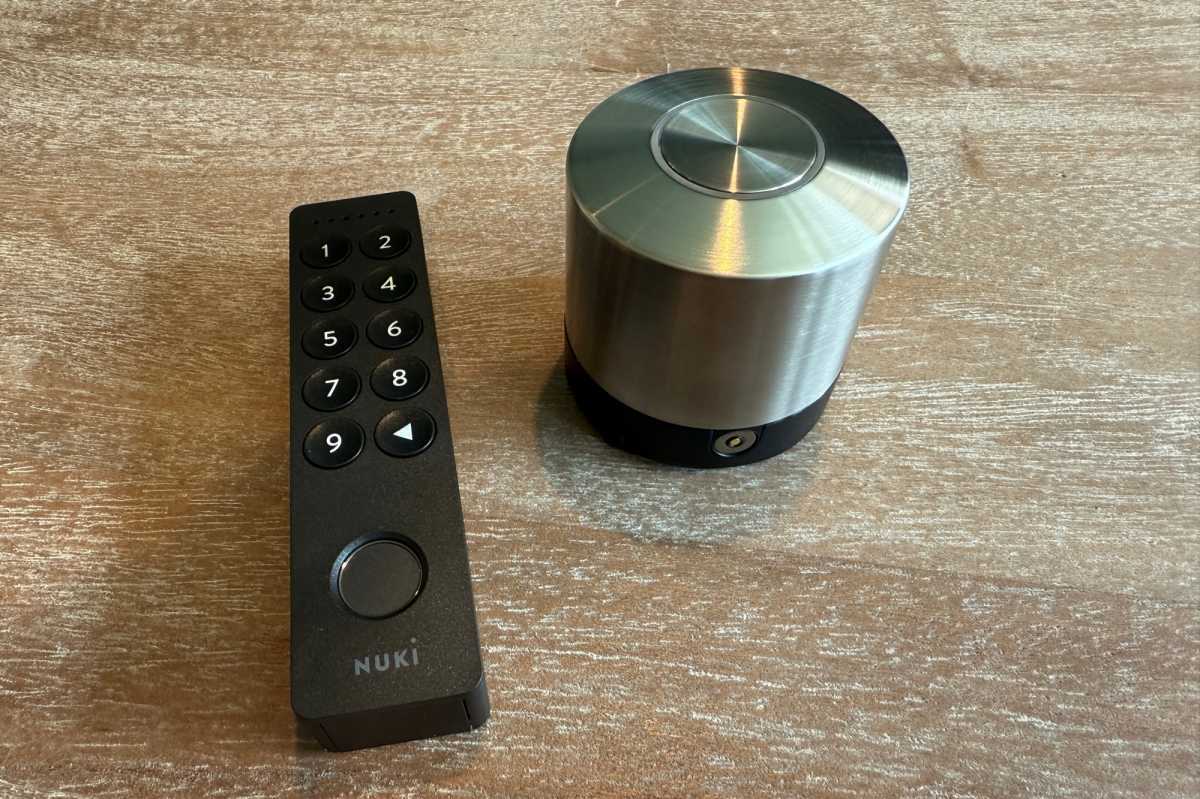
We tested the $159 Nuki Smart Lock with its fingerprint-reader keypad, a $149 option. You can purchase both items as a bundle for $229–a substantial discount over buying the two devices a la carte.
Christopher Null/Foundry
The Nuki lock offers several add-on peripherals: an external numeric keypad ($59), a keypad/fingerprint reader combo ($149), and a door sensor ($59). I received the keypad/fingerprint reader with my test lock; it’s available as a bundle with the lock for $229. I found the slim keypad to be elegant and effective, with buttons that emit a reassuring click when pressed along with a reliable fingerprint reader. The six LEDs across the top are especially handy, as they illuminate, one by one, when you enter a PIN, so you know for sure that your digits were successfully entered. Oddly, all PINs must be precisely six digits long.
User management is a little haphazard, as permissions must be set per device—lock or keypad—separately. With the lock, you can share app-based access (which can be time restricted based on hours of the day and day of the week), which creates a QR code that you send along via other means. With the keypad, access can be configured with a PIN or both PIN and fingerprint (but not just fingerprint), and this access can also be similarly time-restricted. Up to 200 PINs are allowed, but only 20 fingerprints. There is no option to create one-time access codes.
If you don’t like the Nuki app, note that the lock also supports Matter over Thread, and I was easily able to connect it to an Apple Home ecosystem. As with most smart locks controlled over Matter, all you can really do is lock and unlock the door (as well as receive iOS notifications about those changes), but this is nonetheless a convenient option if you don’t want to dig into the Nuki app just to open the door. Considering the Nuki app is often quite slow, having this available, at least as an option, is a good idea.
This review is part of TechHive’s in-depth coverage of the best smart locks.
Should you buy the Nuki Smart Lock?
My only major issue with the Nuki lock is how loud it is. When I first heard it in action, I thought there was something wrong with it; but no, that’s just how the motor sounds: a lot like an old-school dot matrix printer. If you’re not expecting it, the abrupt, grinding noise can even make you jump a bit.
At $159 (for the lock alone), Nuki is competitive in price with August’s flagship lock and most other retrofit locks, but it’s much less expensive than the Level Bolt with Bluetooth + Matter ($229, plus $59 for a numeric keypad). Like that lock, the Nuki’s petite, inobtrusive presentation makes it an appealing choice for homeowners with a strong sense of aesthetics.
That said, there’s room for improvement with the scattered and ploddingly slow app—and something must be done about the noisy motor.



